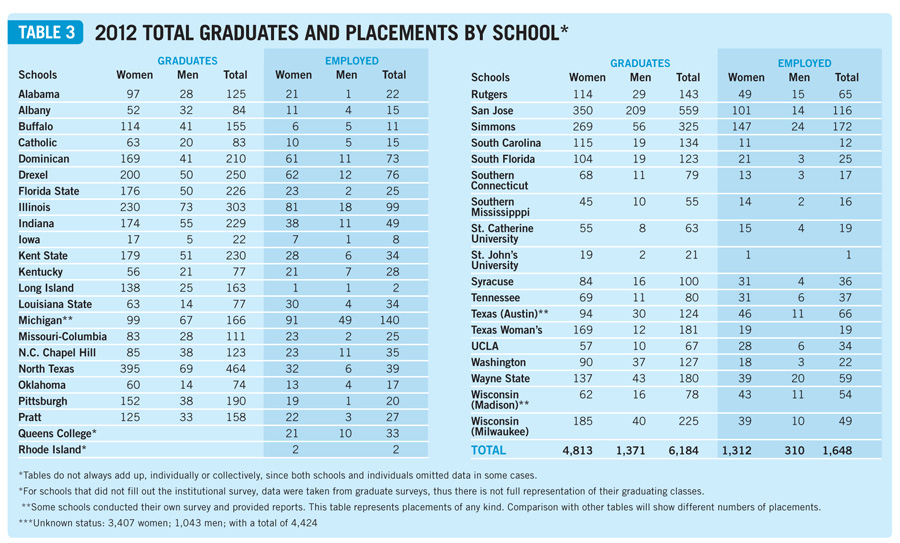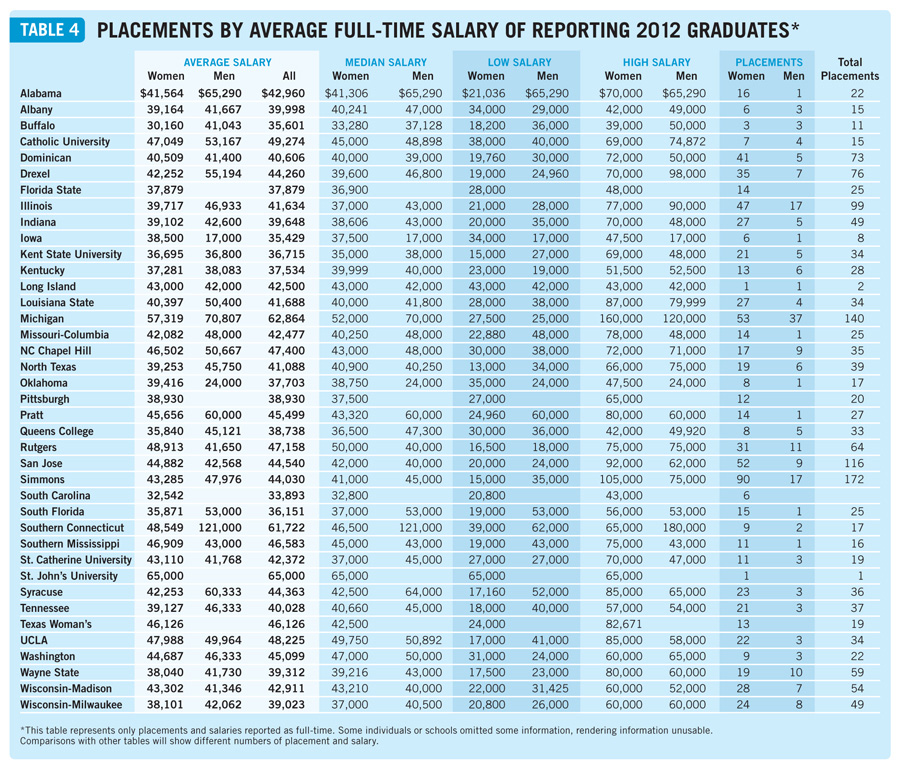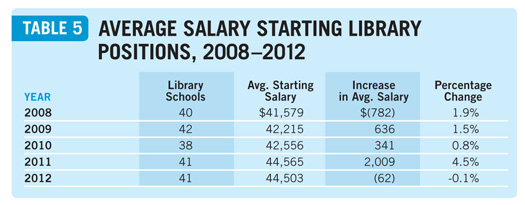2018 School Spending Survey Report
Placements & Salaries 2013: Explore All the Data
Details on jobs and pay for 2012 LIS grads, broken down by region, type of role, school, and more.Dig through these tables to discover the details about where 2012 LIS grads are landing jobs, at what salaries, and in what kinds of roles, or see the full feature for all the analysis. CLICK HERE to download a spreadsheet that contains all of the tables seen below. (You may need to right-click this link and save the file to your computer in order to view it.) |






RELATED
RECOMMENDED
TECHNOLOGY
ALREADY A SUBSCRIBER? LOG IN
We are currently offering this content for free. Sign up now to activate your personal profile, where you can save articles for future viewing


 Also in this article:
Also in this article:






Add Comment :-
Comment Policy:
Comment should not be empty !!!
Elizabeth
As an unemployed recent graduate (May 2013) I can say I haven't received any survey from any source to complete as of yet. I know this is from 2012, but if they do this every year then I question their information gathering. I understand it's difficult to get people to respond to surveys, but information this incomplete isn't really of any help to anyone. There are so few responses this data more or less useless. From what I gather they had a response rate of about 29%, meaning for 71% of the graduate population they have absolutely no clue whether they are employed or not. But this gives the false impression that 74% of new 2012 graduates are unemployed. When I do the math and take only the number of respondents with the number of employed, I come up with a much more reasonable unemployment rate of 3-4% (which would be inline with national averages for those with higher education).Posted : Jan 14, 2014 10:07
Steve Neff
Each October SLA conducts a survey of placements this year the overall placement rate is 26% 6184 graduates and 1648 placements. It would be interesting to do a follow-up study a year later on Library graduates performance instead of 5 months since graduation do 18 months graduation. Even without additional surveys these results are poor. A prison rehabilitation program that had a 26% placement rate I would question the management of the program. It seems that no alarm bells are being raised by the American Library Science Association the agency that accredits these programs.Posted : Jan 02, 2014 03:41
P. Granger
Hi, is it possible for Ms. Maatta or someone from LJ to respond to these comments about the columns not adding up correctly and the disparity in the data between schools that responded to the survey and those that didn't? And, as Chad asked, is it possible to obtain the raw data? I find it troubling that LJ puts this information that affects livelihoods and reputations out into the world and will not provide responses to some really fundamental questions.Posted : Nov 24, 2013 05:13
Twyla
Sorry, don't mean to beat a dead horse, but one more strange total in Table 7, for "Other Organizations." I have added the numbers in the first column up a couple of times, and I get 276 (vs. 334 shown in the table). That's pretty far off. Is it just so late in the workday on a Monday that I've become completely incoherent?Posted : Nov 19, 2013 05:56
Chad Harper
Hello, Are the raw data available from this? Not the summary spreadsheet as provided, but rather the detailed response data? There are some figures on this that are presenting statistically dubious information and there should be more analysis on central tendency. Also, the totals on the first 4 data columns of table 2 are wrong. Left to right they should be 1528, 776, 195, 977. Thanks! CHPosted : Nov 17, 2013 06:12
Dahlia
How ironic that information on salary and placement of information professionals was compiled and presented so poorly.Posted : Nov 03, 2013 07:35
Joneser
Are only FT positions included? Or are the salaries extrapolated from the hourly wage? Because there is a HUGE difference.Posted : Oct 28, 2013 09:47
Matt Marsteller
Why aren't all ALA accredited programs included? I can understand it being difficult if the institution won't respond, but in some cases you've contacted the students and have provided some data.Posted : Oct 26, 2013 09:06
Katie
I could be wrong, but these images seem like JPEGs. Is it possible to present this information so those who are using screen readers (whether for visual disability or other reasons) can access it? Or a link to where the tables might be presented in readable form?Posted : Oct 25, 2013 01:00
Promote ideas, not reputations
Regarding Table 3, it is startling to see the difference in placement numbers between the ** schools that provided their own data and the rest of the schools listed. Is there any point in including that data in the same table? Those institutions clearly used different methodologies for calculating their (evidently phenomenal) success with graduate placements.Posted : Oct 18, 2013 09:48